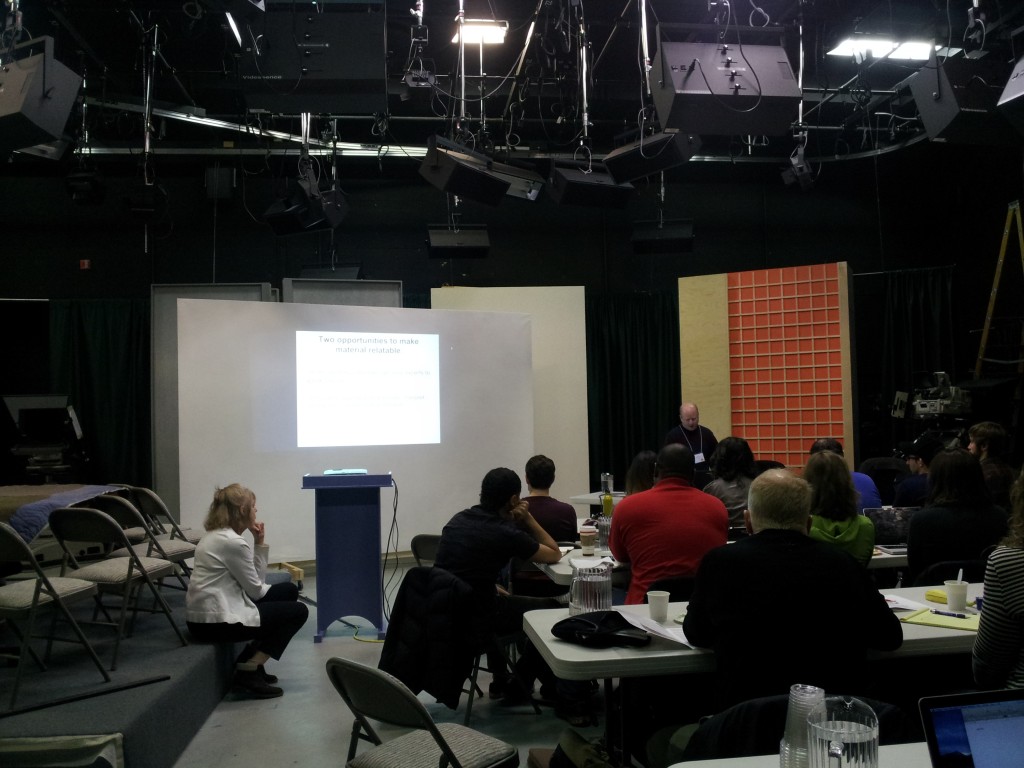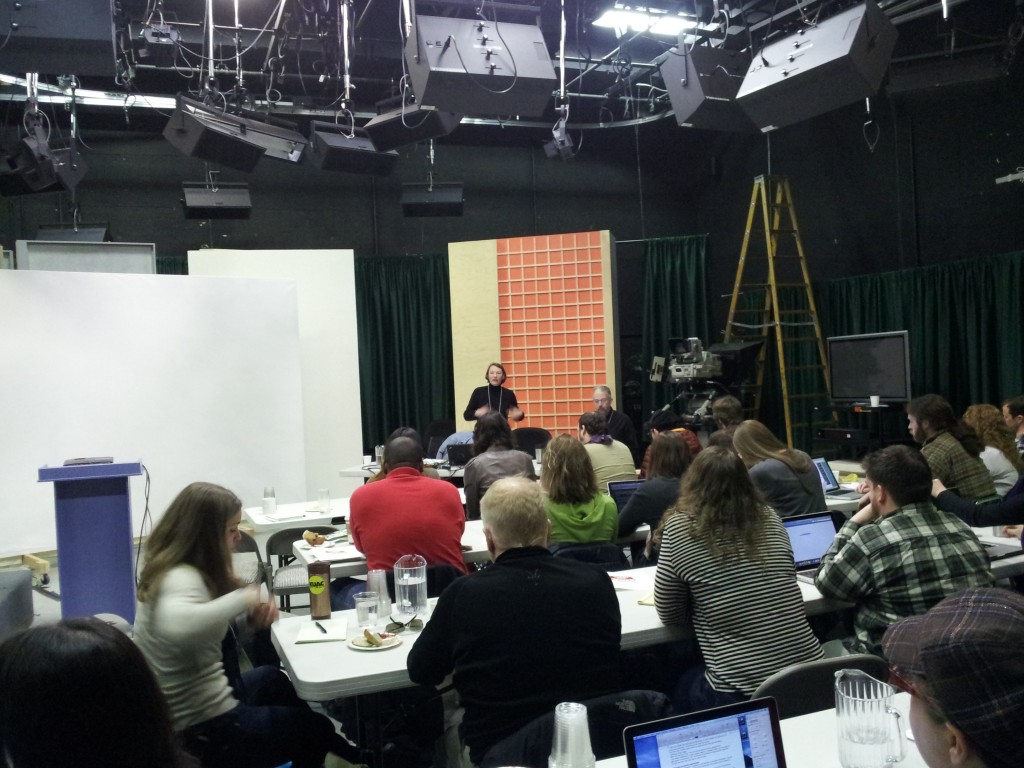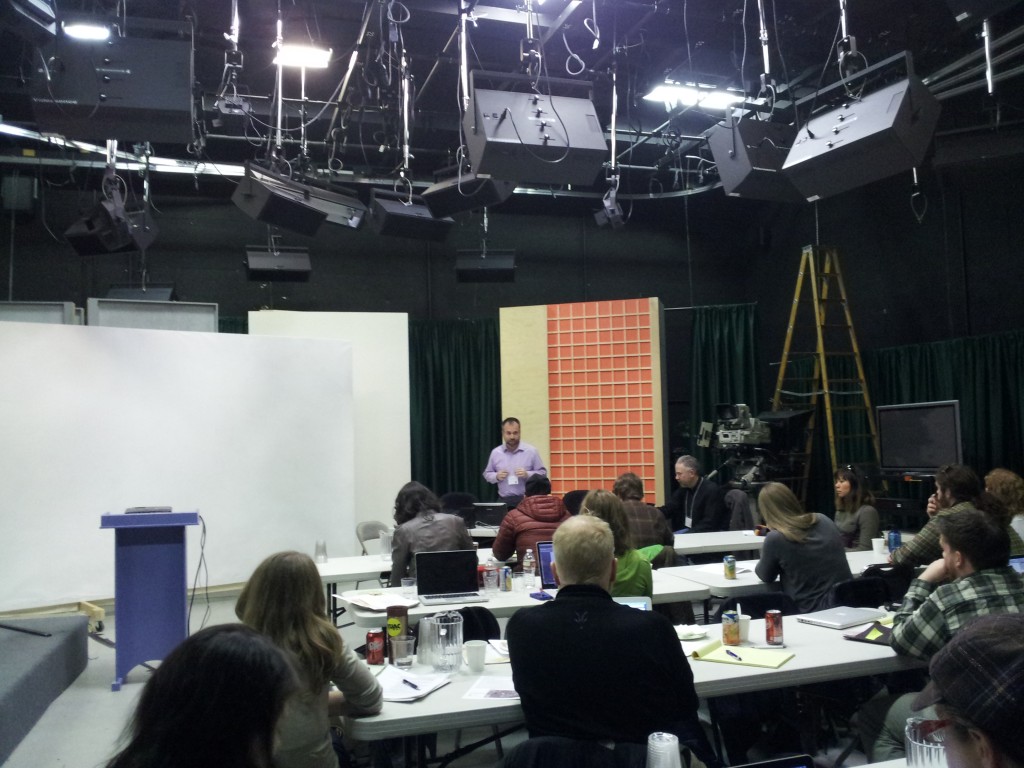
The Alaska Press Club conference is a highlight each year for the state’s hard-working journalists. Membership for the organization is at an all-time high with nearly 150 members, a sizable portion of which is students.
I attended as many sessions as I could and took notes at each. Here are some of the highlights from the Radio Day:
Making Wonky Topics Interesting – Gabriel Spitzer | Youth and Education Reporting for KPLU | @gabrielspitzer
Spitzer delivered an energetic and entertaining presentation on making tricky subjects interesting for your audience.
There are two opportunities to make a story interesting.
- In the reporting/interviews by getting the experts to speak English
- In the writing/production by translating, interpreting, conveying interest and excitement
How to handle hard sources
- Demonstrate interest and that you care about getting it right.
- People are concerned that you’re going to make them look stupid or make them look wrong.
Remember that you are often explaining a complex subject to someone who is only half paying attention to you and you need to get their attention and make them care.
Use “thesis” statements to cast larger meaning. It’s a way of drawing the audience in and making them realize that the story applies to them. The thesis statement serves as signposts along the way in incremental stories, that remind people how we got there.
Writing and Production
- Level-headed explanation – Explain a topic in simple language. Take impenetrable language and translate it for normal people
- Sound – Use sound to make an analogy come to life
- Set-Up – Use an interesting set up to engage listeners and add a little suspense, drama and/or humor.
- Characters/Drama – Use characters to cut through the complexity and communicate the fully humanness of our subjects. Getting that across is a great way to make the stuff accessible and get people to listen to is. Experts are also humans and have something people can relate to. Communicating that to listeners gives them a way into the story.
- Changing the Story Angle -Instead of explaining complex math in a story, go into the explanation of why the scientist cared in the first place. Sometimes, you have to try your best to explain what the material means, and sometimes it works best to make it a human story and instead explain why the person cares so much.
Do enough prep so you know what kind of story you’re capable of explaining and have a plan.
Investigative Reporting for Radio – Ashley Gross | Business and Labor Reporter for KPLU | @ashleykgross
- Do a story about something that matters, that people really care about.
- Start reading and talking to lots of people
- Find good characters and good scenes
- Figure out what documents you need and where they are / keep your ears open
- Talking to people off the record is also very useful. Because that information you can use for your reporting and going to be people who will talk to you on the record.
- Prepare really well before you do your key interviews. Before you go to the person that you’re going to hold to the fire, you need to be really knowledgeable. Don’t ambush them, be fair.
- Make every attempt to reach the people in your story, especially the people who may be at fault. One phone message is not enough. Emails, phone calls, try to find them, contact their lawyer–document these steps.
- Streamline, keep boiling it down to what’s most important to what people are going to care about. You’re dealing with really complicated stuff. It’s really easy once you’re talking to people every day about a topic, it’s easy to get lost in that world. Bring it back for people.
- Use thesis statements as signposts. – Summaries/Statements that help boil it down and bring it back for people.
- Factcheck. Factcheck. Factcheck. After you’ve written your story go back and underline every fact and double check the original source. These can be complicated stories. You want it to be right. It’s serious stuff.
Have journalists and lawyers you can get advice from. Be aware of investigations, but that doesn’t mean you have to defer to them. Be knowledgeable about libel law.
You’re not writing a story for the people in the story. You’re writing it for your audience.
The quick and the deadline – Robert Smith | Correspondent for NPR Planet Money
Smith says he used to approach features like a farmer. He would plant seeds- call call people and ask tons of questions. He’d gather up what he got by the afternoon, and take all the cuts and try to decide which one to use.
Now Smith says he approached story telling hunter style.
“As a hunter you’re not waiting for anything to happen. You have prey and are stalking the story you need.”
Be constantly thinking about where is the motion and if there is no motion think about where can you create a sense of motion.
“The most basic structure I often used it the 3 ring circus. I draw 3 circles – if there’s a story about 4-5 minutes — divide the story into 3 things. If you put three things into a row it creates a sense of movement.”
If you have two pieces, it’s balanced. This person said this, this person said this. Three things are off balance and creates movement.
- Time: Before event, during event, after event
- Place: Outside event, inside event, backstage at event
“Help your subject when explaining complex things.. They don’t know what you want. They don’t know what to do. You influence everything that happens in the story. Be cognizant of that.”



